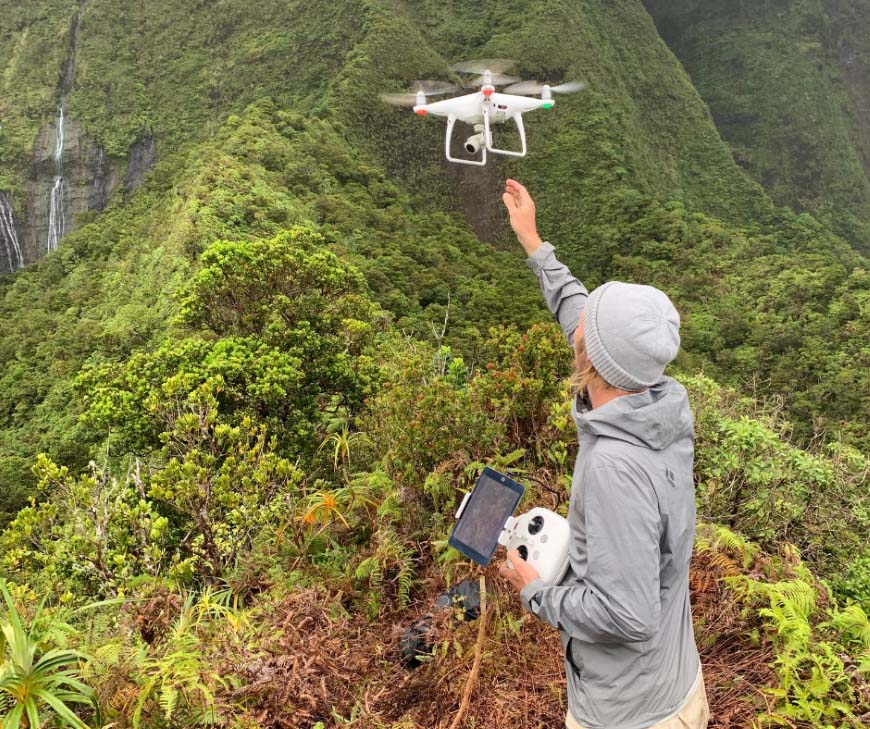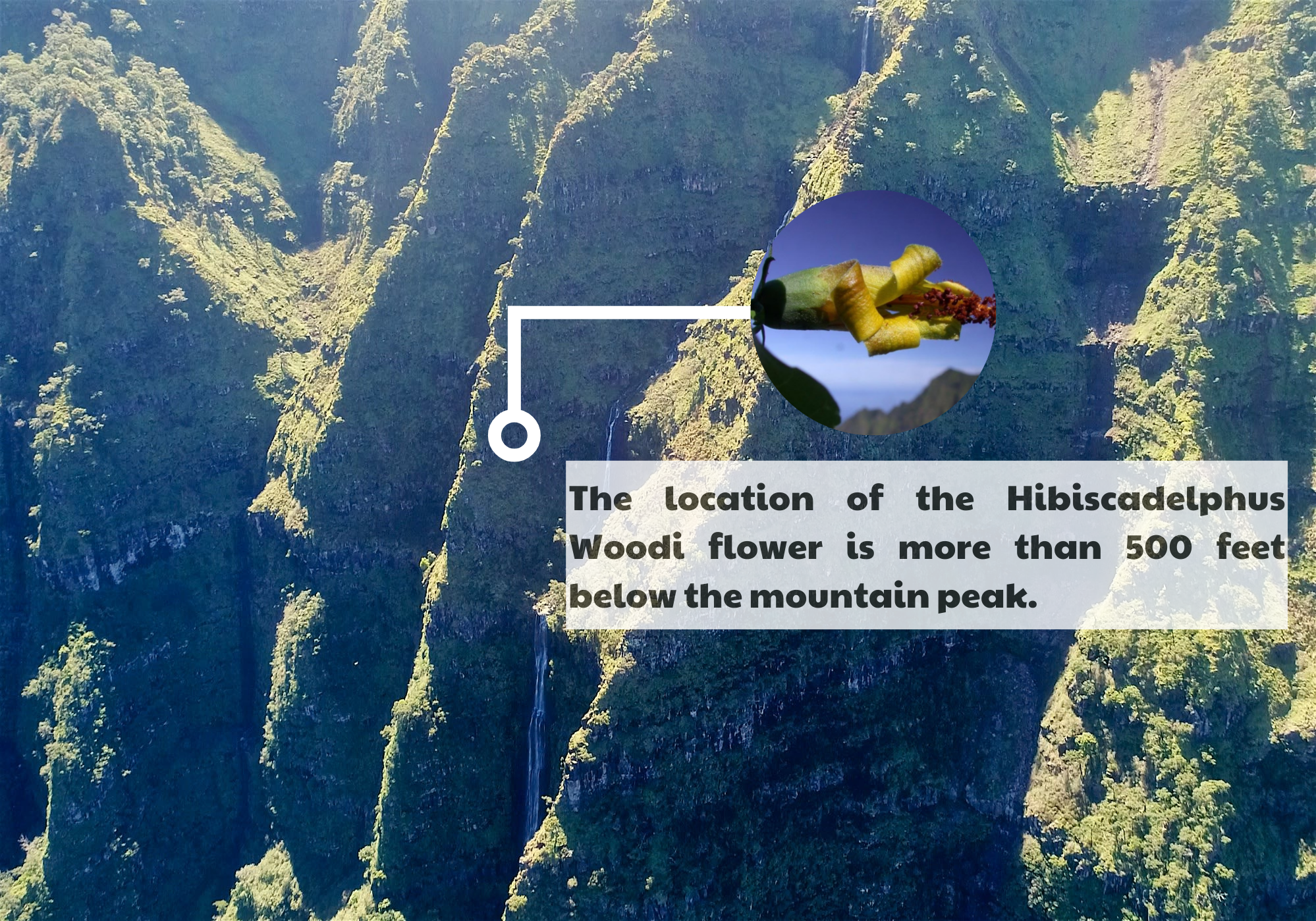Kalalau Valley on the island of Kaua’i, Hawaii, is renowned for its formidable cliffs, which were once nearly impenetrable to humans. In the past, scientists from the National Tropical Botanical Garden (NTBG) had to navigate perilous mountain slopes and rely on ropes to reach rare and elusive plant species. Today, thanks to the advent of drone technology, they can not only conquer these rugged terrains with unprecedented ease but also uncover groundbreaking discoveries that signal a new era in scientific research.
In late January, a drone expedition led to a remarkable finding: Hibiscadelphus woodii, a plant species once presumed extinct since 2016, was found flourishing on a remote cliffside—an area where life had been thought to be permanently lost.

The Rediscovery of Nature’s “Lost Treasure”
First identified in 1991 and formally described in 1995, this plant species, with its striking yellow flowers that turn purple with age, was once a symbol of Hawaii’s unique natural heritage. Tragically, in 2016, scientists declared it extinct after repeated failed attempts to propagate it through cross-pollination, grafting, and cutting methods.
In early February, scientists employed drones to precisely document GPS coordinates and closely examine the area where the species had been rediscovered. Thanks to the precision of drone technology, not just one, but three Hibiscadelphus woodii plants were located on a sheer cliff more than 150 meters (500 feet) below the summit—a place that is completely inaccessible to human visitors. This extraordinary discovery, made possible by drone technology, not only marks the miraculous resurgence of a once-lost plant species but also offers renewed hope for conservation efforts moving forward.

Ben Nyberg, a drone expert at NTBG, employed a meticulous grid scanning system, guided by sharp intuition, to capture GPS coordinates and altitude, which allowed him to precisely relocate the plants. Although the location was pinpointed, accessing the plants remained an immense challenge. Perched on a vertical cliff, more than 150 meters below the mountain’s peak, “even rappelling down is highly dangerous, and this area is too narrow for helicopter operations,” Nyberg explained.
A Revolutionary Breakthrough – Drones Unlocking Nature’s Secrets with Limitless Potential
“The possibilities of this technology are limitless,” Nyberg stated. “From conservation to ecological research, drones open up new frontiers we had never imagined.” The fusion of cutting-edge technology and the unwavering dedication of scientists is unlocking the secrets of the natural world, from the most remote cliffs to dense forests. Kalalau Valley, with its unspoiled beauty and wealth of rare plant species, continues to demonstrate the indispensable role of drones in conservation efforts.
Drones are no longer just tools; they are a vital extension of scientific discovery, reaching places once considered inaccessible and bringing back revelations that transform our understanding of nature. As technology continues to evolve, who knows how many more “hidden treasures” will be revealed, offering new insights into the world around us?
Cre: National Geographic
